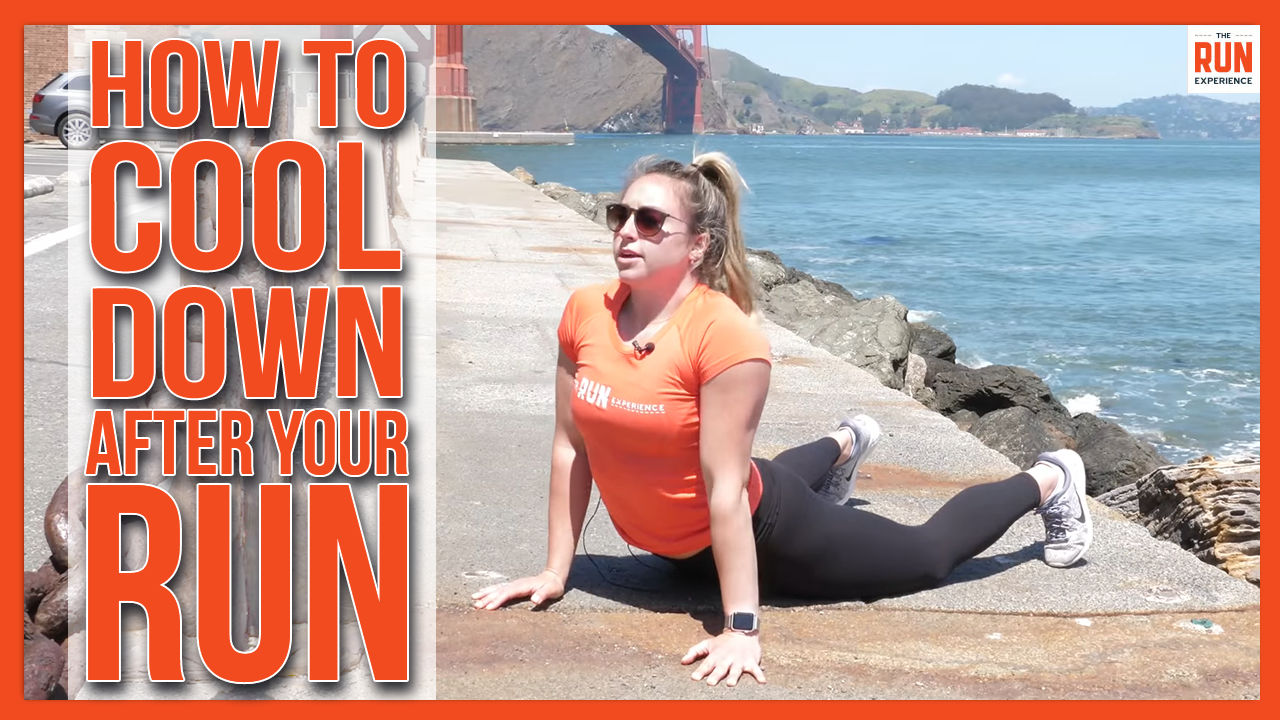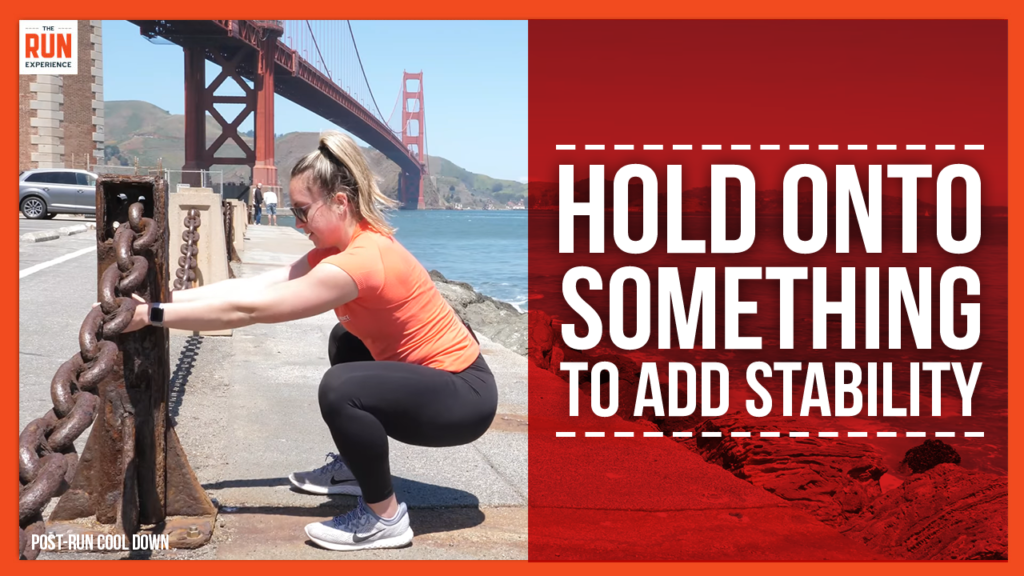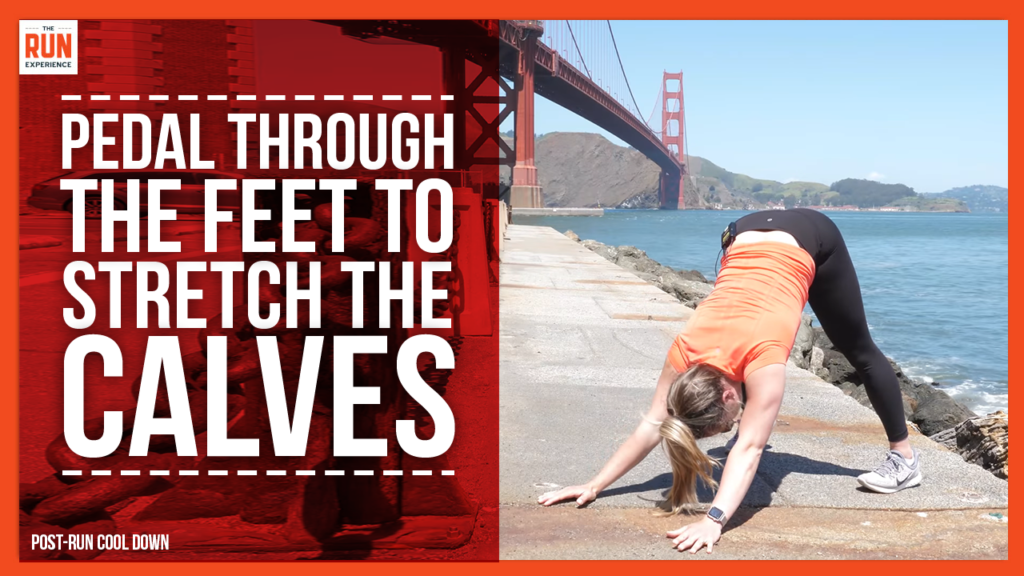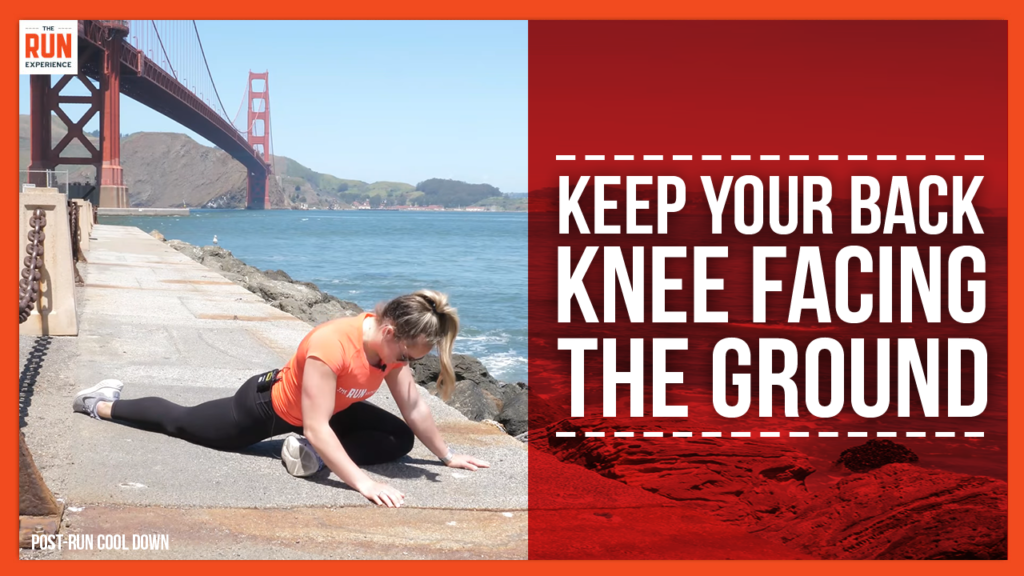Running When Sore: How to Run on Sore Legs (Better)
Running on sore legs is no fun, but it’s part of the sport. However, there are steps you can take to reduce sore muscles from running and recover faster.

Running on sore legs is no fun, but it’s part of the sport. However, there are steps you can take to reduce sore muscles from running and recover faster.
Let's face it — we've all been there. You wake up the morning after a killer workout, and your legs feel like they're made of lead. But here's the thing: running on sore legs is as much a part of our sport as tying our shoelaces. It's just one of those quirks that makes us runners... well, runners.
But what if we told you there's a way to make those achy runs a little less "ugh" and a little more "oh yeah"? At The Run Experience, we're all about helping you become a stronger, more resilient runner — sore legs and all.
In this article, we're diving into the world of running on sore legs. We'll explore:
- When it's okay to push through: Because sometimes, those legs just need a wake-up call.
- When to take a breather: Because rest days are secret weapons, not setbacks.
- Tips to make sore runs more bearable: We've got a few tricks up our sleeves.
- How to reduce soreness in the first place: Prevention is worth a pound of cure — or in this case, a mile of easy running.
So lace up those shoes (even if your calves are protesting), and let's dive in. Trust us — your future, less-sore self will thank you.
Should You Run on Sore Legs?
Deciding whether to run on sore legs is a common dilemma for runners. Soreness can be a natural part of the training process, but understanding when it's safe to push through and when to rest is crucial for your long-term health and performance.
Here's what you need to know:
Understanding Muscle Soreness
- Types of Soreness: There are generally two types of muscle soreness: acute soreness that occurs during or immediately after a workout (often due to fatigue), and Delayed Onset Muscle Soreness (DOMS), which peaks a day or two after your run.
- DOMS: If you're experiencing DOMS, it's a sign that your muscles are recovering from a workout that introduced a new level of intensity or distance. This type of soreness is normal and often an indicator of muscle strengthening.
Running with Sore Legs: The Guidelines
- Mild to Moderate Soreness: If your soreness is mild to moderate and doesn't significantly impact your running form, it's generally safe to continue running. However, it's wise to reduce the intensity and duration of your run. Consider a slow, easy jog instead of a high-intensity workout.
- Severe Soreness: If the soreness is severe, especially to the point where it alters your running form, it's best to rest. Running with severe soreness can lead to compensation injuries as other parts of your body try to take over, leading to a cycle of pain and injury.
- Listen to Your Body: The key is to listen to your body. If you're feeling more than just typical muscle fatigue, such as sharp pain or discomfort that feels out of the ordinary, it's crucial to rest and possibly consult a medical professional.
Alternatives to Running on Sore Legs
- Active Recovery: Consider active recovery options like walking, cycling, or swimming. These activities can increase blood flow to your muscles without the high impact of running, aiding in recovery.
- Stretching and Mobility Work: Engaging in gentle stretching or mobility exercises can help alleviate soreness and improve flexibility.
- Hydration and Nutrition: Proper hydration and nutrition play a crucial role in muscle recovery. Ensure you're drinking enough water and consuming nutrients that aid in muscle repair, like protein.
Tips for Running When Sore
Experiencing some level of muscle soreness as a runner is almost inevitable, especially after intense workouts or long runs. While it's important to listen to your body and rest when necessary, there are times when running with mild soreness can be manageable.
Here are some tips to help you run more comfortably when dealing with sore muscles:
1. Start with a Gentle Warm-Up
Begin with a slow, gentle warm-up to gradually increase blood flow to your muscles. This could be a brisk walk or a light jog, followed by dynamic stretches.
Incorporate dynamic stretches that mimic running movements to prepare your muscles and joints, reducing the stiffness associated with soreness.
2. Adjust Your Running Pace and Distance
If you're feeling sore, it's wise to lower the intensity of your run. Opt for a slower pace and shorter distance to avoid exacerbating muscle fatigue.
Pay attention to how your body responds as you run. If soreness worsens, consider cutting your run short.
3. Focus on Proper Running Form
Keep your posture upright and your strides controlled. Poor form can aggravate sore muscles and lead to further discomfort or injury.
Try to run as relaxed as possible. Tension can exacerbate soreness, so focus on relaxing your shoulders, arms, and hands.
4. Stay Hydrated and Nourished
Proper hydration is key to muscle function and recovery. Ensure you're well-hydrated before, during, and after your run.
Eating foods rich in protein and complex carbohydrates can aid in muscle recovery and provide you with the energy needed for your run.
5. Incorporate Recovery Techniques Post-Run
End your run with a cool-down phase, gradually reducing your pace to a walk. Engage in static stretching after your run to help alleviate muscle tightness.
Using a foam roller on tight muscles can aid in releasing muscle knots and improving blood flow.
6. Embrace the 10-Minute Rule
When you're sore and unmotivated, tell yourself you'll run for just 10 minutes. Here's the deal:
If after 10 minutes you're still feeling rough, give yourself permission to call it a day. You've already done something positive for your body.
But chances are, once you're out there, those endorphins will kick in and you'll want to keep going. It's like a little mind game we play with ourselves — and it works!
7. Try the "fartlek sandwich"
No, it's not a weird Scandinavian lunch. It's a way to break up your sore-leg run:
- Start with 5-10 minutes of easy jogging to warm up those creaky legs.
- In the middle, throw in 5-6 short bursts of speed (about 20 seconds each) with easy jogging in between. This variation can actually help you feel less sore!
- Finish with another 5-10 minutes of easy jogging to cool down. This approach keeps things interesting and can help you forget about the soreness.
8. Bring in the "body scan" technique
This mindfulness practice isn't just for yoga class. As you run, mentally scan your body from head to toe. Notice areas of tension or soreness without judgment.
Consciously try to relax those areas as you run. This not only distracts you from discomfort but can actually help you run more efficiently by releasing unnecessary tension.
Cooldown to Reduce Soreness from Running
This article has a simple, five-minute cool down to restore your muscles after a workout. If you can’t spare five minutes, take the parts you like most and shorten it. If you have longer than five minutes, check out these stretches you can add in. The more you make time for, the better you’ll feel.
Pro tip: Make sure your running shoes fit right and aren’t worn out. Visit your local running store for advice on proper fitting shoes that can help prevent soreness.
Squat Hold
This exercise will help keep your leg muscles, such as the hamstrings and quads from getting sore. To begin, we’re going to sit in our lowest squat position for one minute. Start with your feet a bit wider than hips’ width, toes pointing forward.
From there, bend over and put your hands on your feet or shins and start to squat down as low as you can go with your heels on the ground.
Unlike you would do in a workout, you’re going low enough here that you can sit comfortably for one minute.

If your ankles or calves are tight, you may roll backward as you get to your lowest point. To fix this, go ahead and grab onto something in front of you that you can lean away from.
Breathe and hold in that position, with or without front support, for one minute.
Downward Dog Into Upward Dog

From there, find a downward dog position. To do this, come on all fours facing the ground and then press your hips up into the air.
Keep your feet outside of hips’ width here. Bend your knees if you need to, with the end goal being straight legs with heels touching the ground. Press your chest back toward your quads, using your hands to press down and and away.
Feel free to move around in this position. Like the squat, this should not be painful; it should feel good on your body.
After about 15 seconds there, lower your stomach to the ground and press your chest off the ground, finding an upward dog position.
Try to keep your shoulders away from your ears as you press up, which might mean you don’t come up as high. Keep breathing and feel the stretch in your abs and lower back.
After another 15 seconds or so, move back into that downward dog and repeat this sequence two or three times. This exercise will help keep your calf muscles from getting sore.
Pigeon Stretch
Next, we’ll stretch out the glutes and hip flexors a bit. Sitting on the ground, bring one leg bent in front of you and the other leg extended behind you.
For less stretch, bring the heel of your front leg closer into you, and turn your back knee outward.

For a more difficult stretch, form more of a 90-degree angle with your front leg, and turn your back knee to face the ground.
As with all of these stretches, feel free to move around here. And always keep breathing.
Spend a full minute on one side before switching legs. Don’t be alarmed if one side is tighter than the other side, that is natural, especially in the glutes.
Child’s Pose
We saved the best for last. To finish, all you’re going to do is hold a one-minute child’s pose.
Start by sitting on your knees, and then bend forward with your arms out in front of you on the ground. Try to stretch your hands as far away from you as possible to get a good stretch in your lats.
Play around with how far apart your knees are here, and do what feels good for you. In addition, walk your hands over to one side and then the other to deepen the stretch on the sides of your back.
Try to totally relax in this position, just letting your forehead rest on the ground, inhaling and exhaling.
Prevent Running on Sore Muscles
That wasn’t so bad, was it? This cool-down only takes five minutes, and it can make all the difference in your training tomorrow or the next day.
We've journeyed through the ins and outs of running on sore legs, and here's the bottom line: a little soreness doesn't mean game over. In fact, it often means you're leveling up. Those achy quads and tender calves? They're not just pain — they're your muscles adapting, getting stronger, becoming more resilient.
But remember, we're not advocating for running through serious pain or injury. That's a one-way ticket to Setbackville (real place), and trust us — you don't want to visit there. The key is learning to distinguish between "good" soreness (the kind that comes from pushing your limits) and "bad" pain (the kind that screams, "Hey, something's not right here!").
So, what's the takeaway? Here are our final thoughts:
- Listen to your body — It's smarter than you think and usually knows what it needs.
- Embrace recovery — Those easy days and rest days aren't slacking — they're when the magic happens.
- Stay consistent — A little bit of something is always better than a whole lot of nothing.
- Keep it fun — Because at the end of the day, that's why we're all out here, right?
Remember, every runner — from the weekend warrior to the elite marathoner — deals with sore legs. It's part of the journey. But with the right approach, you can turn those achy days into stepping stones toward your goals.
Are you looking to leverage your performance for your next marathon? Then check out our super popular 8 weeks half marathon training program. This is specially designed to not only help you prepare for the marathon but also guide you on avoiding running injuries and giving your best shot.
